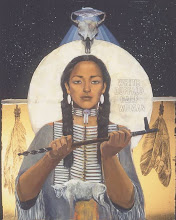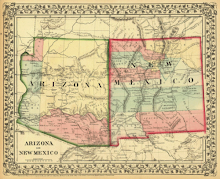Thursday, July 30, 2020
Smallpox-tainted blankets were 1763 bioweapon on northern Appalachian Mountains frontier
By Steve Hammons
Many of us might have heard or read accounts about Native Americans being given blankets tainted with contagious disease during the early Indian wars in an effort to create deadly epidemics among American Indian people.
In situations before, during and after the early colonial Indian wars of the 1700s when this could have occurred, there is often little or no hard evidence.
However, historians have found solid proof of intentional infection of Indian tribes via gifts of smallpox-tainted blankets during spring and summer of 1763 in the northern Appalachian Mountain region. Smallpox is a highly-contagious disease with horrible symptoms, after effects and a high death rate. Even today, it is considered a bioterrorism and bioweapon danger.
During that 1763 period, British officials, commanders and settlers on the western frontier in the central and northern Appalachian Mountains were facing renewed hostilities with local Native people – Shawnee, Mingo, Delaware and others. And British officials and settlers were eagerly eyeing what they called “the Ohio Country” just west of the Appalachians.
The British military and colonists had defeated the French in the French and Indian War (1754–1763) for control of the region. Now, in the spring and summer of 1763, what had previously been the site of French Fort Duquesne at the confluence of the Allegheny and Monongahela rivers was the British frontier outpost Fort Pitt, built in 1758 (now Pittsburgh).
BRITISH COMMANDERS APPROVE PLAN
After the defeat of the French and their signing of a final treaty with the British, regional Native tribes had also signed agreements with the British. Colonial expansion into Indian lands would be restricted, according to these agreements. Native tribes who had sided with the French to push back British expansion into Indian lands briefly ceased hostilities.
But the Native people saw that after the defeat of the French, even more settlers from the British colonies to the east were invading the Appalachian Mountains. The French were pushed out, now the regional Indians also wanted to halt and reverse the intrusion into their lands by British colonists and officials who also wanted that land.
Those British settlers were also pushing over the Appalachian mountains into the western side of the range – into the lands surrounding the vast river said to be known to regional Indians as the “Ohi yo” or “Ohiyo.”
With more British forts, troops and settlers moving into the region, violence again broke out. This is known as “Pontiac’s War.” There were attacks on settlers and battles with frontier colonial militia and Redcoat troops.
Around Fort Pitt, Shawnee, Mingo, Delaware and others were fighting back against the steady invasion of their lands from British military forces and colonists. By summer 1763 Fort Pitt was under siege by a force of regional Native tribes. The Shawnee and their allies had been attacking British outposts and settlers throughout the region.
The commander of Fort Pitt, Capt. Simeon Ecuyer, along with Col. Henry Bouquet and Sir Jeffery Amherst, then commander-in-chief of the British forces in North America, exchanged correspondence about trying to trigger a smallpox epidemic among their Native adversaries.
Ecuyer had sent word that Fort Pitt was under attack, under siege and in grave danger. Because of the Indian attacks, local colonial settlers had fled to the fort. Additionally, smallpox had broken out at Fort Pitt and was also occurring in the area.
Bouquet, based in Philadelphia, was on his way to Fort Pitt with military reinforcements. In their correspondence, the two men agreed on the plan to infect local tribal communities with smallpox.
At the same time of those communications between Ecuyer and Bouquet, a Fort Pitt fur trader, land speculator and militia captain named William Trent wrote in his diary about including blankets from the fort’s smallpox infirmary in gifts and provisions to Native representatives during negotiations.
In the correspondence and diary entries, there is clear and detailed proof of the intent to spread smallpox among the Indian communities. There are also indications that Gen. Thomas Gage, who replaced Amherst the same year as commander of British forces in North America, also may have known about the smallpox infection tactic.
DEFEND THE OHIYO LANDS
Regional tribes on the western side of the Appalachian Range wanted to force the British and their colonists out of the Ohiyo or Ohio region, and back across to the eastern side of the Appalachians.
During the Indian resistance of Pontiac’s War, it has been estimated that more than 500 British troops were killed. In the Ohio River Valley region, approximately 2,000 settlers may have died during the conflicts.
Native forces destroyed many British forts along the frontier. However, Fort Pitt and two others, Fort Detroit and Fort Niagara, survived.
Due to the escalated warfare, in October 1763, British authorities did issue the Royal Proclamation of 1763. This restricted any expansion of settlement by colonists west of the Appalachian Mountain Range.
But by 1763, many colonists were already increasingly at odds with their British overlords, and this proclamation was widely ignored and not enforced. This issue is regarded as one of the many that triggered the American Revolution. British subjects in North America were not about to stop their quest for the land that lay to the west.
And when the full-scale rebellion broke out, the British called upon regional tribes to side with the King and his Redcoats. Because if these rebellious colonists were not held in check, they would surely further invade Indian lands. Many Native tribes did side with the British during the Revolution for that reason.
When the former British colonists established their new nation -- one they named the United States of America -- the expansion of those former colonists westward would continue to impact Native people in traumatic ways for many generations up to the present day.
Historians apparently are unsure how effective the smallpox-contaminated blankets were in causing an epidemic in the Indian communities involved in the siege of Fort Pitt. Smallpox was an ongoing threat in that era.
However, through intentional or unintentional means, it is undisputed that huge percentages of the Native population of North America died from European diseases. This probably significantly contributed to their military defeats from the 1600s to the 1800s as well as much damage and destruction for many American Indian societies and cultures.
(Related articles “Storytelling affects human biology, beliefs, behavior” and “Reagan’s 1987 UN speech on ‘alien threat’ resonates now” are posted on the CultureReady blog, Defense Language and National Security Education Office, Office of the Undersecretary of Defense for Personnel and Readiness, U.S. Department of Defense.)

























































































































































































